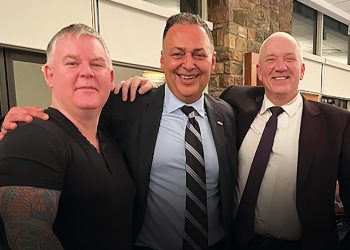RISMEDIA, August 14, 2010—As consumer’s expectations continue to shift, it is crucial that real estate agents take the time to understand these changing needs. One of the ways that successful real estate agents are staying ahead of the curve today is by branding the lifestyles they are selling. Here, Sherry Chris, president & CEO of Better Homes and Gardens Real Estate LLC discusses how her company is staying ahead of the curve and remaining relevant to the lifestyle of their clients.
 Sherry Chris
Sherry Chris
President & CEO
Better Homes and Gardens Real Estate LLC
www.bhgrealestate.com
“The future will see a proliferating mosaic of ever-more eclectic consumer strategies and solutions for building satisfying lifestyles.”
So reads a passage in The Futures Company white paper, A Darwinian Gale: The Recovery Consumer Marketplace in the Era of Consequences. This timely and fascinating study looks at the consumer post the “great recession of 2008/2009” and it concludes, among other things, that “not only are consumers driving conversations with one another, they are also stimulating and driving interactions and conversations directly with brands.”
We couldn’t have put it better ourselves, as it articulates the concept of “lifestyle branding” that Better Homes and Gardens® Real Estate was founded upon in July 2008.
The need for active participation in the larger customer conversation through social media, innovative partnerships and collaborative marketing tools began emerging well before the recession, however. Informed consumers leveraging pervasive technology, coupled with the swell of 73 million Echo Boomers driving “real estate 2.0,” has been evolving for some time to put the consumer in control.
As such, any service business must continually evaluate “what is the value-add being provided?” With a consumer base growing more sophisticated, that means a partnership devoid of ego and distanced from the personality-centric status quo that propelled some of the macro trends that drove traditional real estate marketing.
As President John F. Kennedy famously said in his 1961 inaugural address, “the torch has been passed to a new generation” that was “tempered” and “disciplined” by dramatic changes to their world.
The same can be said of the new real estate client. For they have endured what RECON Intelligence Services Founder and President Jeremy Conaway calls “the perfect storm of consumer emergence,” encompassing a recession, undulating financial indices, a volatile housing market, the emergence of Generations X and Y, the effects of the subprime mortgage crisis and the disruptive technology of social media.
The result is a consumer with a renewed emphasis on value, quality, design, innovation and relationship. It has produced what Steve Yanovsky of BrandAlchemy and Ruth Simmons of Songseekers have called “C-Level Life”—complete consumer control.
For us, this means the focus is community, the tone collaborative and the tactics holistic.
From this springs the need for an Internet presence designed to address the substance and services for the consumer lifestyle. To mimic the natural home-research process and allow the agent to leverage its content to build their own direct brand experiences in their local marketplace.
Reaching out to a customer base that wants innovation, customization and simplicity can be challenging. Especially when entering the world of iPhone apps, which number more than 200,000.
Addressing the consumer demands for integrity, authenticity and performance drive today’s truly iconic lifestyle brands. Nike, Apple and Mountain Dew evoke a connection with their audiences that rise above transactional exchanges. Today’s real estate agent must also look for that lifetime engagement that defines lifestyle branding.
The late Thomas P. (Tip) O’Neill, Jr., former Speaker of the House, is often attributed the quote, “all politics is local.” It was his way to distill the essence of an enormous undertaking, such as trying to appeal to the societal needs of a vast and diverse constituency. I propose similar thinking for real estate agents.
Brand your neighborhood. People don’t buy homes, they buy communities. It is a mistake to emphasize the features of a home to the exclusion of the features of the community.
Lastly, understand the changing expectations of today’s consumer. Perhaps politicians heeding the words of “Tip” O’Neill may realize that change starts at the granular level before it morphs into a larger trend. Be an astute observer of mini-trends to stay ahead of the curve and remain relevant to the lifestyle of your clients.










